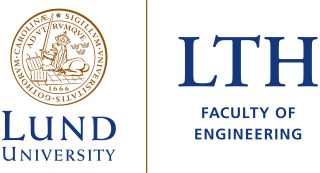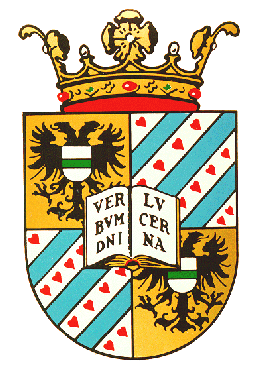
The Faculty of Engineering is one of the eight faculties at Lund University in Lund, Sweden, commonly called LTH. LTH has (2022) about 1,500 employees and nearly 10,000 students, of which about 650 graduate annually. LTH currently offers 16 engineering programmes, 5 higher engineering programmes and 19 international master's programmes. LTH trains civil engineers, fire engineers, architects, industrial designers and doctors of technology. LTH's higher education engineering programmes take place at Campus Helsingborg. LTH also offers a unique education in risk management and professional training in food technology. Since 2010, LTH has also been responsible for the bachelor's programme for airline pilots. The civil engineering programmes were changed in autumn 2007 as a step in the Bologna process and are now 5 years long, equivalent to 300 credits. First-cycle courses are as a rule offered in Swedish, while higher-level courses are often taught in English with English literature.

The University of Groningen is a public research university of more than 30,000 students in the city of Groningen in the Netherlands. Founded in 1614, the university is the second oldest in the country.

The Molecular Foundry is a nanoscience user facility located at the Lawrence Berkeley National Laboratory in Berkeley, California, and is one of five Nanoscale Science Research Centers sponsored by the United States Department of Energy.
Engineering physics (EP), sometimes engineering science, is the field of study combining pure science disciplines and engineering disciplines.

Nanotechnology education involves a multidisciplinary natural science education with courses such as physics, chemistry, mathematics, and molecular biology. It is being offered by many universities around the world. The first program involving nanotechnology was offered by the University of Toronto's Engineering Science program, where nanotechnology could be taken as an option.
The Max Planck Institute for Solid State Research was founded in 1969 and is one of the 82 Max Planck Institutes of the Max Planck Society. It is located on a campus in Stuttgart, together with the Max Planck Institute for Intelligent Systems.
Central Scientific Instruments Organisation is a Chandigarh, India-based national laboratory dedicated to research, design and development of scientific, and industrial instruments. It is one of the constituent laboratories of the Council of Scientific and Industrial Research (CSIR), an Indian industrial research and development organisation situated at Chandigarh's Sector 30-C.

Indian Institute of Science Education and Research, Pune is an autonomous public university established in 2006. It is one of the seven Indian Institutes of Science Education and Research, and was one of the first IISERs to be established along with IISER Kolkata. It is located in the city of Pune, India.
Smart systems are systems which are able to incorporate and perform functions of sensing, actuation, and control in order to analyze a situation, based on acquired data and perform decisions in a predictive or adaptive manner, thereby performing smart actions. In most cases the Intelligence/"smartness" of the system can be attributed to autonomous operation based on closed loop control, resource management, and networking capabilities.
IOP Publishing is the publishing company of the Institute of Physics. It provides publications through which scientific research is distributed worldwide, including journals, community websites, magazines, conference proceedings and books. The Institute of Physics is a scientific charity devoted to increasing the practice, understanding and application of physics. Any financial surplus earned by IOP Publishing goes to support physics through the activities of the Institute.

The École Nationale Supérieure de Physique, Électronique et Matériaux is a Grande École located in Grenoble, France. Phelma is part of Grenoble Institute of Technology. The school specializes in physics, electronics and materials.

Interdisciplinary Nanoscience Center (iNANO), is an interdisciplinary research and teaching center for nanoscience at Aarhus University in Aarhus, Denmark. The center was founded in 2002 and has been headquartered in The iNano House since 2012.

Younan Xia is a Chinese-American chemist, materials scientist, and bioengineer. He is the Brock Family Chair and Georgia Research Alliance (GRA) Eminent Scholar in Nanomedicine in the Wallace H. Coulter Department of Biomedical Engineering, with joint appointments in the School of Chemistry & Biochemistry, the School of Chemical & Biomolecular Engineering, and Parker H. Petit Institute for Bioengineering & Bioscience at the Georgia Institute of Technology.
IMDEA is a project founded by the Madrid Regional Government, included in the IV Regional Plan of Scientific Research and Technological Innovation 2005-2008 (PRICIT), for the purpose of setting up advanced research centers and higher education and training in the Community of Madrid. Between 2006 and 2008 the project created nine IMDEA Institutes of which two were closed.
Dipankar Das Sarma, popularly known as D.D. Sarma, is an Indian scientist and structural chemist, known for his researches in the fields of Solid State Chemistry, Spectroscopy, Condensed Matter Physics, Materials Science, and Nanoscience. He is a former MLS Chair Professor of Physics and Chairman of the Centre for Advanced Materials and the GAST Professor of Uppsala University, Sweden, A recipient of TWAS Physics Prize and the UNESCO Biennial Javed Husain Prize, Sarma was honored by the Council for Scientific and Industrial Research (CSIR), Government of India, in 1994, with the Shanti Swarup Bhatnagar Prize for Science and Technology.

Julia Rosolovsky Greer is a materials scientist and is the Ruben F. and Donna Mettler Professor of Materials Science, Mechanics and Medical Engineering at the California Institute of Technology (Caltech). As of 2019, Greer is also the director of the Kavli Nanoscience Institute at Caltech.

The Louvain School of Engineering or École polytechnique de Louvain (EPL) is a faculty of the University of Louvain, Belgium, founded in 1864. Known as the Faculty of Applied Sciences prior to 2008, it currently operates on the campuses of Louvain-la-Neuve and UCLouvain Charleroi.

Laura Henderson Lewis is an American electronic materials scientist and engineer. She is a distinguished university professor at Northeastern University, having previously served as the department chair of Northeastern University's chemical engineering department. Prior to her Northeastern University position, she was a research group leader and associate department chair in the nanoscience department of Brookhaven National Laboratory (BNL).











